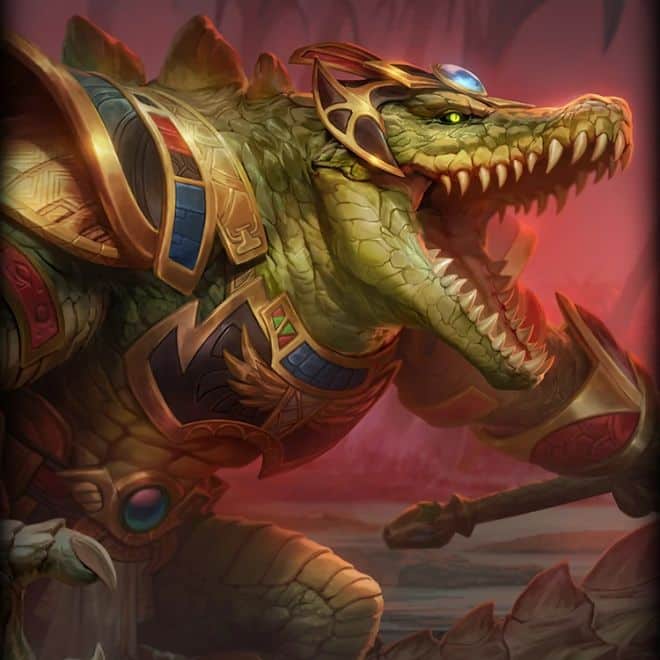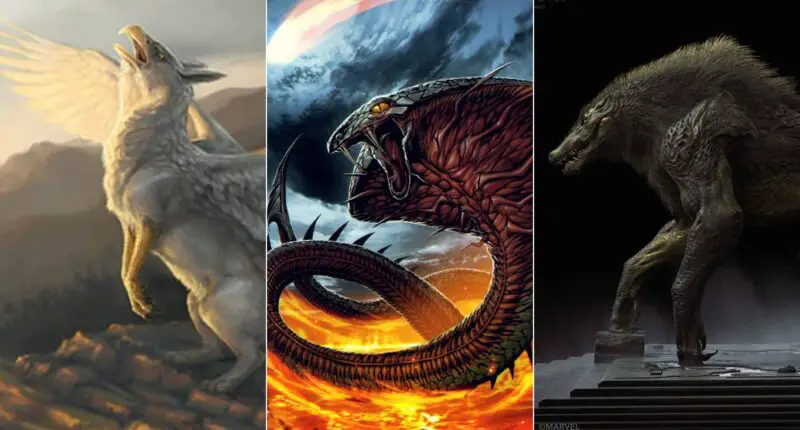Egyptian mythology is replete with a myriad of captivating creatures that have captured the imaginations of people for centuries. From majestic beings to terrifying monsters, these mythological creatures play a significant role in the stories and beliefs of ancient Egypt. The rich tapestry of Egyptian mythology unveils a diverse array of creatures that fascinated and influenced ancient Egyptian culture. In this blog, we will delve into it’s enchanting world and explore 10 fascinating beasts of Egyptian Mythology that have left an indelible mark on history and continue to intrigue us to this day. Exploring these fascinating beasts allows us to glimpse into the depth of this mythology and appreciate the enduring legacy of these ancient creatures.
10 Fascinating Beasts of Egyptian Mythology
The Griffin

The Griffin, a legendary creature with the body of a lion and the wings of an eagle, occupies a prominent place in Egyptian mythology. Depicted as a guardian of treasure and a protector of the divine, the Griffin symbolizes strength, vigilance, and intelligence. Revered for its majestic appearance and fearsome nature, it is often associated with the sun god Ra and represents the divine authority of the pharaohs. The Griffin’s presence in Egyptian mythology highlights the ancient Egyptians’ admiration for powerful and noble creatures.
Ammit

Fearsome devourer of the dead “Ammit”, is an intriguing beast in Egyptian mythology. This creature, with the head of a crocodile, the front legs of a lion, and the hindquarters of a hippopotamus, resides in the Hall of Ma’at. Ammit’s purpose is to weigh the hearts of the deceased against the feather of Ma’at during the judgment of souls. If the heart is found to be heavier than the feather, Ammit devours it, condemning the person to eternal unrest. The existence of Ammit underscores the ancient Egyptians’ belief in the importance of a righteous life and the consequences of one’s actions.
Bennu

Bennu, the mythological bird associated with the sun and rebirth, captivates with its grace and symbolism. Often depicted as a heron or a crane, Bennu is believed to be a manifestation of the sun god Ra or the soul of Osiris. With its connection to the concept of rebirth, Bennu represents the cyclical nature of life and the eternal renewal of the cosmos. The myth of Bennu inspired the symbolism of the phoenix in later cultures, making it a creature of profound significance and an enduring emblem of resurrection.
Apep

In the depths of Egyptian mythology lurks Apep, the personification of chaos and the eternal adversary of the sun god Ra. This monstrous serpent, often depicted as a giant snake or a dragon, resides in the underworld and seeks to devour Ra as he travels through the night. Apep embodies the forces of disorder and represents the perpetual battle between order and chaos. The ancient Egyptians believed that the priests and pharaohs had a crucial role in defending Ra against Apep’s onslaught, emphasizing the significance of their divine duties in maintaining cosmic harmony.
El Naddaha

El Naddaha, also known as “the caller,” is a mythical creature from Egyptian folklore that combines elements of a siren and a ghostly spirit. This captivating entity is said to inhabit water bodies, such as rivers and lakes, and lures unsuspecting humans into its depths with its enchanting voice. El Naddaha embodies the allure and danger of water, acting as a cautionary figure in ancient Egyptian culture. Tales of encounters with El Naddaha serve as a reminder of the importance of respecting and being wary of the natural forces that surround us.
The Serpopard

A hybrid creature with the body of a leopard and the long neck of a serpent “The Serpopard”, finds its place among the fascinating beasts of Egyptian mythology. Often depicted in ceremonial art and as a symbol of royal power, the Serpopard represents the fusion of land and water, earth and sky. This mystical creature embodies the ancient Egyptians’ reverence for the interconnectedness of different realms and the harmonious balance they sought to achieve. The Serpopard’s imagery serves as a reminder of the intricate relationships between various aspects of life and the pursuit of equilibrium.
The Sphinx

The enigmatic Sphinx, with its human head and lion’s body, stands as an iconic creature of Egyptian mythology. Gazing solemnly across the desert, the Sphinx symbolizes wisdom, guardianship, and mystery. Often associated with the pharaohs and the sun god Ra, this monumental creature personifies the essence of divine power and knowledge. The riddle of the Sphinx, as depicted in mythological tales, reflects the ancient Egyptians’ emphasis on intellectual prowess and the challenges one must overcome to attain enlightenment.
Uraeus

A symbol of divine authority and protection “Uraeus”, takes the form of a rearing cobra. This sacred serpent adorns the headdresses of Egyptian pharaohs, representing their connection to the gods and their divine right to rule. The Uraeus also acts as a guardian against malevolent forces, striking fear into the hearts of potential adversaries. Its presence emphasizes the significant role of the pharaoh as a mediator between the mortal and divine realms and showcases the ancient Egyptians’ belief in the power of divine protection.
Typhon

Typhon, a fearsome monster with the head of a crocodile and the body of a serpent, embodies chaos and destruction in Egyptian mythology. Often depicted as a gigantic creature, Typhon represents the forces of nature that can unleash havoc upon the world. The ancient Egyptians believed that the god Seth battled against Typhon to protect order and stability. Typhon’s existence serves as a reminder of the precarious balance between creation and destruction, emphasizing the necessity of maintaining harmony and safeguarding against chaos.
Sobek

The crocodile god “Sobek”, is a prominent figure in Egyptian mythology. With his fearsome appearance and associations with the Nile River, Sobek is both revered and feared. Egyptians believed that Sobek had power over the annual flooding of the Nile, which was vital for their agricultural prosperity. As a deity, Sobek embodies strength, fertility, and protection. His worship illustrates the profound importance of the Nile and its ecosystem to ancient Egyptian society and underscores their reverence for the natural world and the forces that sustained their civilization.
Also Read: 10 Important Moral Lessons from the Hindu Mythology



